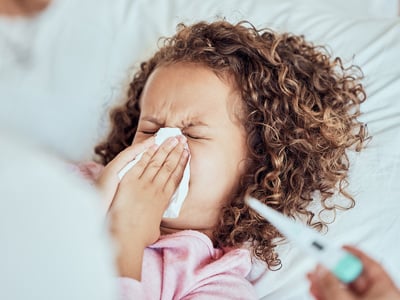- Doctors & Departments
-
Conditions & Advice
- Overview
- Conditions and Symptoms
- ¿Está enfermo su hijo?
- Parent Resources
- The Connection Journey
- Calma Un Bebé Que Llora
- Sports Articles
- Dosage Tables
- Baby Guide
-
Your Visit
- Overview
- Prepare for Your Visit
- Your Overnight Stay
- Send a Cheer Card
- Family and Patient Resources
- Patient Cost Estimate
- Insurance and Financial Resources
- Online Bill Pay
- Medical Records
- Política y procedimientos en el hospital
- Preguntamos Porque Nos Importa
-
Community
- Overview
- Addressing the Youth Mental Health Crisis
- Calendar of Events
- Child Health Advocacy
- Community Health
- Community Partners
- Corporate Relations
- Global Health
- Patient Advocacy
- Patient Stories
- Pediatric Affiliations
- Support Children’s Colorado
- Specialty Outreach Clinics
Your Support Matters
Upcoming Events
Colorado Hospitals Substance Exposed Newborn Quality Improvement Collaborative CHoSEN Conference (Hybrid)
lunes, 29 de abril de 2024The CHoSEN Collaborative is an effort to increase consistency in...
-
Research & Innovation
- Overview
- Pediatric Clinical Trials
- Q: Pediatric Health Advances
- Discoveries and Milestones
- Training and Internships
- Academic Affiliation
- Investigator Resources
- Funding Opportunities
- Center For Innovation
- Support Our Research
- Research Areas

It starts with a Q:
For the latest cutting-edge research, innovative collaborations and remarkable discoveries in child health, read stories from across all our areas of study in Q: Advances and Answers in Pediatric Health.


9 Common Childhood Illnesses and Conditions

Do you ever feel like your kid brings home a new sickness every week? You’re not imagining it — kids are more prone to illness because their immune systems are still developing. Plus, they’re often in environments where they’re exposed to other kids who are carrying sickness-causing germs.
While this is normal, a child’s sickness and its symptoms can still pose concerns for caregivers. After all, how do you know if what they’re experiencing is normal, or something more serious? What are some common illnesses and conditions you should expect to encounter throughout childhood?
Children’s Hospital Colorado pediatrician David Keller, MD, shares insights on the conditions and illnesses he often sees — and what caregivers should know about treating and preventing them.
1. Anxiety
From COVID-19 pandemic stress to social media pressures, children today are faced with many new sources of anxiety. Anxiety is a mental health condition that can present itself in children as worry, fear, phobias and depression, but it can also manifest in physical symptoms such as fatigue, stomachaches, insomnia and more.
“The world is an anxiety-producing place right now,” Dr. Keller says. “I think shutting off (or delaying) social media is probably your best bet for reducing anxiety.”
Additionally, staying updated with your child’s social relationships can help you decide if they’re experiencing bullying at school or online — another common source of anxiety among kids today. A child’s body image and sense of self might also be negatively impacted if they’re feeling anxious or depressed, so you can help by watching for signs of low self-esteem. To help kids of all ages cope with anxiety, therapy interventions are a proven place to start.
“Talk therapy has a pretty good track record of helping kids deal with anxiety and there’s a lot of strategies that can be taught,” Dr. Keller adds. “There are places and people that can do short interventions to help kids get through those things.”
More guidance and services are also available from our Pediatric Mental Health Institute.
2. Head lice
Head lice are small insects that infest human hair and feed on blood. This unpleasant condition commonly spreads among school-aged children who are in close contact with one another.
“Lice can be very hard to treat, but it’s not dangerous,” Dr. Keller explains. “People think that if you get head lice, you must be unclean or dirty or not executing good hygiene, but that’s not true — it’s mostly just bad luck.”
A telltale sign of lice is intense itching. So, if you see your child scratching their head more than normal, be sure to take a look at their head. Lice are visible to the naked eye and look like small brown insects the size of a sesame seed. Also look for their nits, or empty eggshells, which are small white ovals attached to the hair near the scalp.
To get rid of lice, Dr. Keller recommends a protocol involving anti-lice shampoo, nit removal, washing bed linens and clothing in hot water and staying away from other infected kids until the coast is clear.
3. Stomach bugs
Kids who spend a lot of time around other kids may be prone to catching the stomach flu, also referred to as a stomach bug. This illness, often caused by rotavirus, is marked by an upset stomach, diarrhea, vomiting, cramps and sometimes a fever.
It spreads the same way many other common childhood illnesses are spread — when kids touch germs on surfaces and then touch their mouth. As soon as kids get old enough, teaching them how to wash their hands and avoid touching their mouth is a helpful way to prevent these kinds of bugs. Additionally, help your child understand that sharing food and drinks with other kids can also pass germs along.
If your kid has a stomach bug, Dr. Keller recommends making sure they rest and drink plenty of fluids and electrolytes to help the illness pass naturally.
4. Croup
Croup, a viral infection that causes upper airway inflammation, is one of the many types of coughs that can affect children. The two main signs of croup are a barking cough or hoarseness.
A mild case of croup can usually resolve without intervention, but it’s important to watch for symptoms that may indicate something more serious. Difficulty breathing or swallowing is an emergency situation that requires assistance from a doctor immediately. A sick or fatigued appearance, dehydration, a bluish color around the mouth or a stridor (high-pitched squeaking when inhaling) are all additional signs that your child may be experiencing respiratory distress and needs to see a doctor right away.
Since most instances of croup are a result of viral infections, a great way to prevent it is to practice proper hand hygiene and steer clear of those who may be sick. If your child does contract croup, it can be eased at home through rest, warm fluids and a humidifier (as long as you use it with caution).
5. Roseola
Roseola is a mild viral illness that’s most common among children aged 2 and under. Roseola is caused by the herpes virus, which can spread to a child if an affected person coughs or sneezes near them.
While roseola may seem harmful, especially when your child is crying from a fever or a rash, according to Dr. Keller, it’s easy to diagnose and usually goes away on its own. “Roseola is one of the most benign things your kids will ever have. It’s not dangerous and it doesn’t cause problems,” he adds.
Dr. Keller says that seeing a doctor usually isn’t necessary for roseola, and that a call or virtual appointment can help diagnose the condition. “I can make a diagnosis over the telephone if you tell me your child had a 104-degree fever for four days that went away, and now they have a rash all over their body.”
To ease your child’s fever, try placing a cool washcloth on their forehead, giving them popsicles and keeping them hydrated. Most people only get roseola once, so after your child experiences it, you can rest assured that they likely won’t have it again.
6. Respiratory syncytial virus (RSV)
Respiratory syncytial virus, or RSV, causes cold-like symptoms such as congestion, cough, runny nose and sore throat. Many cases of RSV clear within two weeks of symptoms first appearing, but they can also worsen into an upper respiratory infection like bronchiolitis, or pneumonia.
“Once you're over 2 months of age, from an infection standpoint, probably the biggest threats to you are viral respiratory infections,” Dr. Keller explains. “RSV is still the main infectious disease you have to worry about.”
Following basic hand hygiene, curbing the spread of germs and avoiding contact with others who are sick can help prevent your child from getting RSV. If your baby or toddler is eligible, ensuring they receive immunization to protect against RSV is the best way to prevent infection and avoid severe complications from the virus. To help with symptoms of RSV at home, focus on helping your child stay hydrated and give them fever reducers according to their doctor’s advice.
7. Pink eye
Pink eye, also known as conjunctivitis, occurs when the eyeball becomes infected and inflamed. Pink eye can be caused by allergies, but it can also be contracted from someone else via a bacterial or viral infection.
“When kids are in daycare or at school, they will spread it because they rub their eye, they touch things that other kids touch, etc.,” Dr. Keller says. "Like the common cold, it is very common, and exclusion for school or daycare doesn’t really slow or prevent spread.”
“The most common type of pink eye is caused by viral infections,” he says. In this case, antibiotics won’t be effective, since antibiotics only help with bacterial infections. Instead, it’s best to let viral pink eye resolve on its own. A cold compress and artificial tears can help ease the itchiness and discomfort of pink eye at home.
8. Impetigo
Impetigo is a common skin rash characterized by small, coin-shaped sores that become infected and turn into scabs the color of honey. Impetigo usually begins with an ordinary scratch or insect bite. When exposed to bacteria like staphylococcus (staph) and streptococcus (strep) these normal wounds worsen into small bumps that can turn into blisters, which later result in sores that can ooze fluid or pus.
If your child has a wound that isn’t healing, and instead seems to be getting worse, impetigo may be the cause. When there’s only one or two sores and the impetigo doesn’t seem to be spreading, the infection can likely be managed at home. Washing the sores with antibacterial soap and water is a simple, yet effective way to reduce sores. Aloe vera gel can also help soothe irritation from the rash.
But if there are three or more sores, or if your child is also experiencing a sore throat, larger and spreading sores, increasing redness or other worsening impetigo symptoms, it may be time to call your doctor to advise on next steps.
9. Colds, the flu and COVID-19
Colds have always been an ordinary part of childhood, but with influenza (the flu) and COVID-19 in the mix, it can be hard to tell what illness your child has.
All three illnesses can cause a cough, sore throat and a runny nose, but other symptoms may help you determine which illness your child has. Our quick symptoms chart makes it easy to understand the differences between respiratory illnesses like the common cold, the flu, COVID-19, RSV and allergies. But the only way to know for sure which respiratory virus your child has is through testing. Your healthcare provider can recommend the types of test your child needs based on their symptoms and risk factors and help you determine an at-home care plan.
A well-care visit is the perfect time to make sure kids and teens are up to date with their flu and COVID-19 vaccines.



 720-777-0123
720-777-0123






